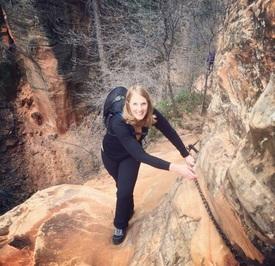Weighing food raw vs. cooked

smagazzo
Posts: 1 Member
Hi Everyone,
I know in general you're supposed to weigh prepackaged foods like rice and pasta BEFORE cooking to get an accurate calorie count. However, what about foods that aren't prepackaged like produce? For example, I love making baked sweet potato fries but when I weigh the serving before and after, the cooked weight is always more than half of the raw weight...which weight should I be using when inputting the serving size? Any thoughts/help would be greatly appreciated! Thanks!
I know in general you're supposed to weigh prepackaged foods like rice and pasta BEFORE cooking to get an accurate calorie count. However, what about foods that aren't prepackaged like produce? For example, I love making baked sweet potato fries but when I weigh the serving before and after, the cooked weight is always more than half of the raw weight...which weight should I be using when inputting the serving size? Any thoughts/help would be greatly appreciated! Thanks!
0
Replies
-
Interested to hear the answer to this.
I've been weighing once it has been cooked. Maybe I've been doing it all wrong!0 -
I have been wondering this myself!0
-
I am wondering the same thing. Interested to hear a response.0
-
Raw is best, but if you have to do it cooked, make sure you use a 'cooked' entry.0
-
I only weigh raw. Always.0
-
Always weigh it raw.0
-
Question about raw weighing: when you are cooking for a family, how do you keep your items separate? Do you cook them separately? Some things are pretty easy, but what about veggies or items that are shared between people?0
-
Some pastas specify on the label if it's a dry weight or cooked weight. With stuff like that I like to weigh it before it's cooked to know I'm cooking the right amount, then again after to know how much my indivual portion should be (ie the final cooked weight is 400 gm and I cooked 4 servings so I know I need to weigh out 100gm of the cooked product to get 1 serving)
I know meat can be quite different cooked vs raw, but I just don't want to put raw meat near my food scale. Plus it's just not practical for things like ground turkey/hamburger. So usually I weigh out 2.5 oz of meat and enter it as 3 oz to try to account for the raw/cooked difference.0 -
Raw is best, but if you have to do it cooked, make sure you use a 'cooked' entry.
I have been wondering about this forever, too. I never see "cooked" versus "raw" entries. Is this only on the website? I almost always use the app.0 -
Weigh raw whenever possible; the cooking method alters the final weight and raw will be more precise. For instance, take 120g of raw chicken breast. Cook the every-living hell out of it and it will weigh 75g due to moisture loss. Cook it beautifully and it might weigh 90g. But each of the three measurements still contain the same number of calories. If you over-cook it and weigh the dry nasty meat, you will be consuming more calories than you're logging.
If you are weighing something cooked, find an entry for cooked. There are entries for most produce cooked. Search "sweet potato baked" to find an option for a baked sweet potato. Same with chicken - look for "chicken roasted" to find an example. Look for the entry without an asterisk, as those are not user-entered and are more accurate; they also typically have multiple measurement options, including grams, which I use most of the time.Question about raw weighing: when you are cooking for a family, how do you keep your items separate? Do you cook them separately? Some things are pretty easy, but what about veggies or items that are shared between people?
I create a recipe here. If I'm roasting sweet potatoes, like the OP suggested, I'll use the recipe builder and include the raw sweet potato weight, olive oil, salt, and whatever herbs and spices I'm using. Then if it's meant to serve my family of 3, I tell the builder it's three servings and log one.
If you want to get very picky, you can weight the final product and then weigh out each serving, but I eyeball the servings, while weighing what goes into it.0 -
Weigh raw whenever possible; the cooking method alters the final weight and raw will be more precise. For instance, take 120g of raw chicken breast. Cook the every-living hell out of it and it will weigh 75g due to moisture loss. Cook it beautifully and it might weigh 90g. But each of the three measurements still contain the same number of calories. If you over-cook it and weigh the dry nasty meat, you will be consuming more calories than you're logging.
If you are weighing something cooked, find an entry for cooked. There are entries for most produce cooked. Search "sweet potato baked" to find an option for a baked sweet potato. Same with chicken - look for "chicken roasted" to find an example. Look for the entry without an asterisk, as those are not user-entered and are more accurate; they also typically have multiple measurement options, including grams, which I use most of the time.Question about raw weighing: when you are cooking for a family, how do you keep your items separate? Do you cook them separately? Some things are pretty easy, but what about veggies or items that are shared between people?
I create a recipe here. If I'm roasting sweet potatoes, like the OP suggested, I'll use the recipe builder and include the raw sweet potato weight, olive oil, salt, and whatever herbs and spices I'm using. Then if it's meant to serve my family of 3, I tell the builder it's three servings and log one.
If you want to get very picky, you can weight the final product and then weigh out each serving, but I eyeball the servings, while weighing what goes into it.
Thanks for the answer! You've obviously been quite successful using that method so I'll start trying this tonight!0 -
Weigh raw whenever possible; the cooking method alters the final weight and raw will be more precise. For instance, take 120g of raw chicken breast. Cook the every-living hell out of it and it will weigh 75g due to moisture loss. Cook it beautifully and it might weigh 90g. But each of the three measurements still contain the same number of calories. If you over-cook it and weigh the dry nasty meat, you will be consuming more calories than you're logging.
If you are weighing something cooked, find an entry for cooked. There are entries for most produce cooked. Search "sweet potato baked" to find an option for a baked sweet potato. Same with chicken - look for "chicken roasted" to find an example. Look for the entry without an asterisk, as those are not user-entered and are more accurate; they also typically have multiple measurement options, including grams, which I use most of the time.Question about raw weighing: when you are cooking for a family, how do you keep your items separate? Do you cook them separately? Some things are pretty easy, but what about veggies or items that are shared between people?
I create a recipe here. If I'm roasting sweet potatoes, like the OP suggested, I'll use the recipe builder and include the raw sweet potato weight, olive oil, salt, and whatever herbs and spices I'm using. Then if it's meant to serve my family of 3, I tell the builder it's three servings and log one.
If you want to get very picky, you can weight the final product and then weigh out each serving, but I eyeball the servings, while weighing what goes into it.
Thanks for that! Duh, now I see my earlier post was pretty stupid. I usually choose the description that matches how I cooked it (grilled, roasted, etc.) so I guess I AM logging correctly. I was just confused by the words "cooked" and "raw", not usually finding the actual word "raw" in the descriptions and so I thought I was missing something.
Thanks for the info! Sounds like it helped a few of us. :-)0 -
Question about raw weighing: when you are cooking for a family, how do you keep your items separate? Do you cook them separately? Some things are pretty easy, but what about veggies or items that are shared between people?
I calculate the calories in the entire recipe, then estimate out the desired fraction. If I want a third of the total, I scoop out a third of the pan. If my wife wants a third, she takes half of what's left.0
This discussion has been closed.
Categories
- All Categories
- 1.4M Health, Wellness and Goals
- 395.4K Introduce Yourself
- 44.1K Getting Started
- 260.7K Health and Weight Loss
- 176.2K Food and Nutrition
- 47.5K Recipes
- 232.7K Fitness and Exercise
- 445 Sleep, Mindfulness and Overall Wellness
- 6.5K Goal: Maintaining Weight
- 8.6K Goal: Gaining Weight and Body Building
- 153.2K Motivation and Support
- 8.2K Challenges
- 1.3K Debate Club
- 96.4K Chit-Chat
- 2.5K Fun and Games
- 4.3K MyFitnessPal Information
- 16 News and Announcements
- 1.3K Feature Suggestions and Ideas
- 2.9K MyFitnessPal Tech Support Questions









